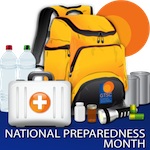
Do You Know Where Your Employees Are?
 Following the attack at the Boston Marathon, so many people tried to reach their loved ones that wireless carriers couldn’t keep up with demand. When faced with calamity, we want to check on our friends and family and get information about what happened.
Following the attack at the Boston Marathon, so many people tried to reach their loved ones that wireless carriers couldn’t keep up with demand. When faced with calamity, we want to check on our friends and family and get information about what happened.
Don’t Make It Up As You Go Along
This need to receive and disseminate information following a catastrophe is important to businesses, too. You need to determine where your employees are and if everyone is safe. You need to make sure people know what they should do or where they should go. You need to reach out to your customers. In some cases, you need to talk to the press and answer their questions.
It is difficult, if not impossible, to come up with a coherent, comprehensive communications plan in the shadow of a crisis. Often, saying the wrong thing can haunt you for weeks or months after the event.
Plan Ahead, Communicate the Plan
Your building already has an occupant emergency procedure that covers evacuation during a fire or taking cover in the center of the building during a storm, but that plan doesn’t cover communication within your organization or to your clients.
Compose two types of alerts—internal and external. Internal alerts should be broadcast through email, overhead paging systems, voice messages, or text messages to employees. Internal alerts should include information about evacuation, relocation, assembly points and status updates, including telling employees when it is safe to return to the office. Let your employees know, as part of your disaster preparedness training, how you will communicate with them after a crisis.
External communication involves notifying employees’ families, discussing the situation with the press, social media status updates, and email to customers and clients. Each external message should be crafted to suit the intended audience. In the immediate aftermath, people will accept broad statements, but they will want more concrete information as soon as you can deliver it. Being prepared will make it easier to get the right message to the right people.
Communication is Mitigation
Once everyone is safe, you need to safeguard your business and your reputation. Planning what you will communicate, when you will communicate, and to whom you will communicate in the event of an emergency, may be the difference between a full recovery and a downward spiral. Customers, clients, the media, and your employees, will be reassured by clear, concise, professional communication if you’re business is faced with an emergency situation.
After a disaster or a disruption, you’ll have enough to handle. Don’t leave crisis communications to chance.

Lilly Harris
CEO
MSA
Lilly Harris is the President and CEO of Man-Machine Systems Assessment. MSA is an Economically Disadvantaged Woman-Owned Small Business with 23 years of government contracting experience. MSA is passionate about our Warfighters and the preparedness of our nation. MSA works diligently to evaluate defense systems, ensure continuity of operations and support mission critical programs that are aligned with our passion and mission.
Visit: www.msaincorp.com
Follow: @MSAincorp

